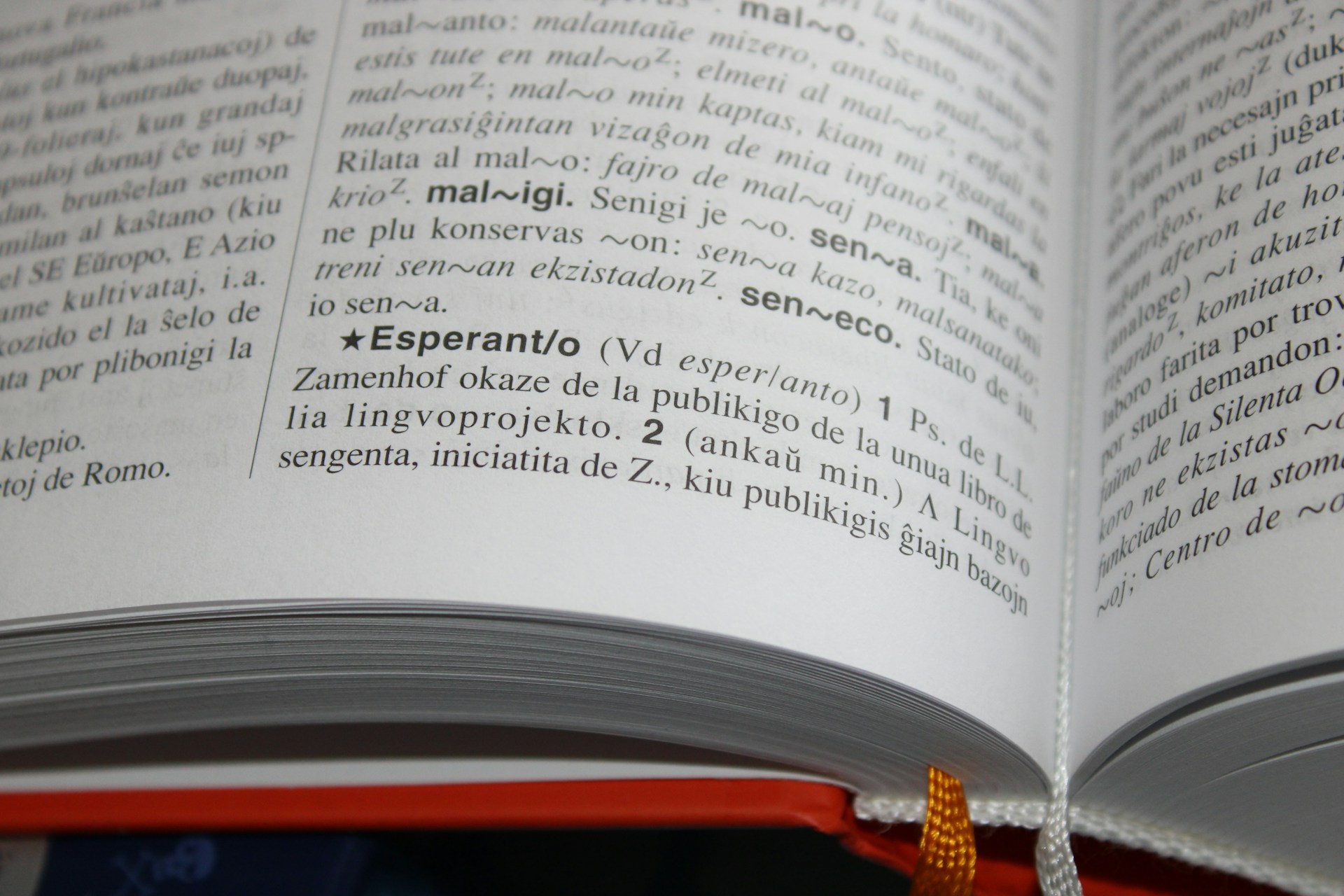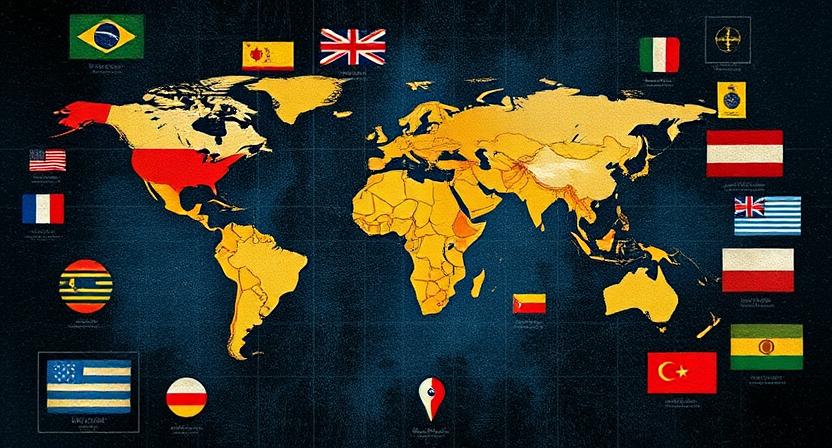The Most Unique Languages in the World and How to Start Learning Them

Languages with Unusual Phonetics
One language that stands out for its unusual phonetics is Xhosa, spoken primarily in South Africa. Xhosa incorporates click consonants into its phonetic system, adding a unique and distinct sound to the language that can be challenging for non-native speakers to master. These clicks are represented by symbols such as “!,” “ǂ,” and “|,” each denoting a different type of click sound.
Another language known for its peculiar phonetics is Taa, spoken by the !Kung people in Botswana and Namibia. Taa is renowned for having one of the largest phoneme inventories of any language, with over 140 distinct consonants and 30 vowels. This extensive range of sounds contributes to Taa’s intricate phonetic system, making it a fascinating subject for linguistic study.
Languages with Complex Tonal Systems
For languages with complex tonal systems, the pitch and tone at which a word is spoken can completely change its meaning. This added layer of linguistic complexity can be challenging for non-native speakers to grasp, as the tonal variations are crucial in conveying the intended message accurately. Mastery of tonal nuances is essential to fluently communicate in such languages, making them intriguing for language enthusiasts and scholars.
The tonal intricacies in these languages often result in misinterpretations if the tones are not pronounced correctly. Each tone carries its own semantic significance, adding depth and precision to verbal communication. Thus, mastering the tonal patterns is crucial for effective and accurate expression in these languages, highlighting the intricate relationship between sound and meaning.
Languages with Unique Writing Systems
When it comes to unique writing systems, the Cherokee language stands out for its distinctive script invented by Sequoyah in the early 19th century. This syllabary, consisting of characters representing consonant-vowel pairs, allowed the Cherokee people to preserve their language and culture amidst tumultuous times. The script’s creation is a testament to the ingenuity and determination of Sequoyah and the Cherokee community in maintaining their linguistic identity.
Another notable example of a language with a unique writing system is Japanese kanji, which incorporates characters borrowed from Chinese logograms. The intricate symbols convey meaning through both their pictorial representation and phonetic pronunciation, making Japanese writing a rich tapestry of history and context. The complexity of kanji poses a challenge for learners, yet it also serves as a gateway to understanding the cultural nuances embedded within the characters.
Languages with Rare Verb Conjugations
Among the vast array of languages spoken around the world, there are some that stand out for their rare verb conjugations. These languages exhibit intricate patterns and nuances in their verb conjugation systems, adding depth and complexity to their grammar structures. From the use of unique suffixes and prefixes to the incorporation of tense, mood, aspect, and even evidentiality markers, these languages require speakers to pay close attention to detail when conjugating verbs.
In some languages with rare verb conjugations, the conjugation of a verb can vary not only based on the subject pronoun but also on various other factors such as the specificity of the action, the presence of an object, or even the speaker’s relationship to the information being conveyed. This level of grammatical intricacy showcases the rich linguistic diversity present in the world and highlights how languages can differ greatly in the way they express actions and events through verb conjugations.
Languages with Intricate Grammar Rules
Japanese, Navajo, and Hungarian are just a few examples of languages globally recognized for their complex and intricate grammar rules. These languages require speakers to pay close attention to the structure, form, and arrangement of words within sentences in order to convey meaning accurately. Navigating the nuances of verb conjugations, noun cases, and sentence particles can be a challenging yet rewarding task for learners of these languages.
In Japanese, for instance, verbs are conjugated based on various factors like tense, politeness level, and formality. Additionally, word order plays a crucial role in determining the subject, object, and verb in a sentence. Similarly, Navajo features a complex system of verb conjugations that indicate not only tense and aspect but also the relationship between the speaker and the action. Meanwhile, Hungarian showcases a rich array of noun cases that convey specific roles and relationships within sentences, requiring a thorough understanding of grammar rules to express ideas accurately.
Languages with Uncommon Word Order
One language that challenges the conventional subject-verb-object word order is Japanese. In Japanese, the basic word order is subject-object-verb. This deviation from the typical subject-verb-object structure can lead to sentences that might seem backward to English speakers. For example, “I apples eat” would be the equivalent of “I eat apples” in Japanese.
Another language that defies the standard word order is Latin. Latin is known for its flexible word order due to its inflectional system which marks grammatical relationships within the words themselves. This allows Latin to place words in almost any order without changing the meaning of the sentence. This flexibility in word order offers a certain artistic and expressive quality to Latin poetry and prose.
Languages with Diverse Dialects
Across the globe, many languages boast a myriad of diverse dialects that reflect the rich tapestry of human communication. These variations often emerge due to geographical or social factors, shaping the way speakers interact and express themselves within their communities. From slight differences in pronunciation to unique vocabulary usages, these dialectal nuances can add depth and complexity to a language, preserving regional identities and cultural heritage.
In some cases, the distinctions between dialects can be so significant that speakers from different regions may struggle to comprehend each other fully. However, this linguistic diversity should be celebrated for its role in fostering a sense of belonging and fostering connections among speakers. While standard forms of a language provide a common ground for communication, the existence of diverse dialects highlights the dynamic nature of language and the adaptability of human expression across various contexts and settings.
Languages with Rich Cultural History
Languages with rich cultural history provide fascinating insights into the traditions, beliefs, and practices of the people who speak them. These languages have evolved over centuries, intertwined with the social, political, and artistic developments of their respective communities. Each word and expression in these languages carries layers of historical significance, reflecting the cultural heritage and collective memory of the speakers.
The richness of cultural history embedded in these languages often serves as a bridge connecting the past with the present, fostering a sense of continuity and identity among speakers. Through the study and preservation of these languages, researchers and linguists gain valuable perspectives on the customs, values, and worldviews of diverse societies. Furthermore, the cultural nuances and symbolic meanings encoded in the vocabulary and grammar of these languages offer a window into the intricate tapestry of human experience and expression.
Languages with Limited Vocabulary
For some languages, having a limited vocabulary does not hinder effective communication. These languages make use of contextual cues, tone, and body language to convey nuanced meanings that might require more words in other languages. Speakers of such languages often possess a deep understanding of their cultural norms and values, allowing them to express complex ideas with brevity.
In contrast to languages with expansive vocabulary, those with limited lexicons often prioritize concise and precise communication. This focus on clarity and efficiency can lead to a deeper appreciation for the subtleties of language and a heightened awareness of the power of individual words. Despite the constraints posed by a smaller set of words, speakers of these languages demonstrate a remarkable ability to convey profound emotions and intricate concepts with seemingly simple phrases.
Languages with Few Native Speakers
Languages with few native speakers often face challenges in preserving their linguistic heritage and ensuring its continuity for future generations. These languages tend to be spoken in remote regions or by small, isolated communities, making them more vulnerable to language shift and assimilation into dominant languages. The lack of widespread speakers also hinders these languages from adapting to modern advancements and integrating with global communication networks.
Despite their limited number of native speakers, these languages play a crucial role in preserving unique cultural and historical traditions. The rich linguistic diversity within these communities offers valuable insights into different worldviews, belief systems, and ways of life. Efforts to document and revitalize these languages are essential not only for linguistic diversity but also for promoting cultural understanding and intercultural dialogue in an increasingly interconnected world.
• Despite their limited number of native speakers, these languages play a crucial role in preserving unique cultural and historical traditions.
• The rich linguistic diversity within these communities offers valuable insights into different worldviews, belief systems, and ways of life.
• Efforts to document and revitalize these languages are essential not only for linguistic diversity but also for promoting cultural understanding and intercultural dialogue in an increasingly interconnected world.
Languages with Endangered Status
Many languages around the world face the danger of extinction, as they struggle to survive in a rapidly changing linguistic landscape. The threat of losing these languages represents a significant loss of cultural heritage and diversity. Efforts to preserve and revitalize endangered languages are crucial in maintaining the rich tapestry of human communication and expression.
The decline of these languages often reflects broader societal changes and challenges, such as globalization, urbanization, and the dominance of major world languages. Without proactive measures to protect and promote endangered languages, we risk losing valuable insights into unique ways of seeing the world and understanding human experience. The preservation of endangered languages is not just about words and grammar but also about safeguarding invaluable repositories of knowledge, stories, and traditions.
Languages with Extensive Loanwords
Languages with extensive loanwords are an intriguing subject of study due to the rich diversity they offer in linguistic exploration. When a language absorbs vocabulary from other languages, it not only expands its lexicon but also provides a window into the cultural exchanges and historical influences that have shaped its development. Loanwords can often reveal the significant interactions and connections between different communities, shedding light on the intricate ways in which languages evolve over time.
The incorporation of loanwords into a language can add depth and nuance to its expression, allowing speakers to convey nuanced meanings that may not have existed in the language originally. This enrichment of vocabulary through borrowing from other languages highlights the adaptability and fluidity of languages, showcasing their ability to evolve and assimilate new linguistic elements. By examining languages with extensive loanwords, linguists can gain valuable insights into the interconnectedness of world cultures and the fascinating dynamics of language contact and exchange.
Languages with Intriguing Pronunciation
The nuances of pronunciation in languages around the world have always fascinated linguists and language enthusiasts alike. The intriguing phonetic sounds and distinct articulations found in various languages offer a glimpse into the rich tapestry of human communication. From the impressive clicks and pops of Xhosa to the melodic tones of Vietnamese, each language showcases a unique approach to speech sounds that reflects the cultural and historical context of its speakers.
Furthermore, the presence of tonal languages adds another layer of complexity to the pronunciation of words. Languages like Mandarin Chinese and Thai rely on pitch variations to distinguish between different meanings, making mastering the correct intonation essential for effective communication. The intricate interplay between tones and phonemes in tonal languages creates a captivating musicality that sets them apart from non-tonal languages and adds a fascinating dimension to the study of pronunciation.
Languages with Distinctive Syntax
In Default Language:
One language known for its distinctive syntax is Japanese. In Japanese, the basic word order is subject-object-verb, which differs from the subject-verb-object structure found in English. This unique syntax often places the verb at the end of the sentence, emphasizing the action or event being described rather than the subject performing the action.
Another language renowned for its distinctive syntax is Latin. Latin employs a complex system of cases, which means that word endings change depending on their grammatical function within a sentence. This allows for a flexible word order, as the meaning of a sentence is determined by the endings of the words rather than their placement. Such syntactic flexibility in Latin enables speakers to convey nuanced meanings and emphasize different aspects of a sentence.
Languages with Fascinating Etymology
The study of language etymology serves as a captivating journey into the historical origins and development of various languages. Etymology delves into the roots of words, uncovering layers of meaning and connections to their past. Understanding the etymology of a language provides insight into its evolution, influences, and the cultural contexts in which it emerged.
Languages with fascinating etymology offer a window into the diverse paths that words have traveled over centuries. Exploring the etymology of a language reveals a tapestry of connections to other languages, migration patterns, trade routes, and societal changes. The intricate web of linguistic histories embedded in the etymology of languages adds depth and richness to our understanding of human communication.
Languages with Varied Register Levels
When examining languages with varied register levels, one can observe the diverse ways in which speakers adjust their language based on different social contexts and relationships. This linguistic feature allows individuals to adapt their speech to fit formal or informal situations, showcasing the intricate nuances of communication within a specific culture. In some languages, register levels can range from highly formal and respectful speech to casual and intimate expressions, reflecting the multifaceted nature of human interaction and the importance of appropriate language use in different settings.
The use of varied register levels in languages serves not only as a way to show respect and politeness but also as a means of expressing social hierarchy and relationships. Through the careful selection of vocabulary, pronunciation, and grammatical structures, speakers can convey their level of familiarity or social status to others within their community. Moreover, these linguistic variations can demonstrate cultural values and traditions, highlighting the significance of language in shaping interpersonal dynamics and reinforcing societal norms.
Languages with Specific Writing Direction
Writing direction in languages varies around the world, with some languages following a left-to-right pattern, others a right-to-left pattern, and a few even top-to-bottom. This diversity is a fascinating aspect of linguistic diversity that showcases the adaptability of human communication. Some languages, such as English, employ a left-to-right writing system that is familiar to many. However, languages like Arabic and Hebrew are written from right to left, presenting a unique challenge to those accustomed to left-to-right scripts.
In addition to the horizontal writing systems, some languages like traditional Chinese and Japanese can be written vertically from top to bottom. This distinct direction of writing adds another layer to the complexity of these languages and requires a different approach when it comes to reading and comprehending the text. The specific writing direction of a language is not merely a visual difference but also reflects the cultural heritage and traditions of its speakers, making it a crucial element in understanding the language as a whole.
Languages with Iconic Sign Language
Sign languages are a fascinating aspect of human communication, with some incorporating iconic elements that visually represent the meaning of words or concepts. These iconic sign languages use gestures that directly resemble the objects, actions, or ideas they are referring to, making them easier to understand for both deaf and hearing individuals. By incorporating visual cues and movements that mimic real-life scenarios, iconic sign languages create a more vivid and intuitive form of expression.
One notable example of an iconic sign language is American Sign Language (ASL), which includes signs that resemble the actions or objects they represent. For instance, the sign for “flying” involves moving one hand in a wave-like motion to mimic the movement of a bird in flight. This visual representation adds depth and meaning to the signs, enhancing the overall communication experience for users.
Languages with Untranslatable Concepts
Languages with untranslatable concepts often provide a fascinating glimpse into the depths of a culture’s way of thinking. These unique linguistic expressions capture ideas or emotions that may not have direct equivalents in other languages. For instance, the Japanese term “wabi-sabi” encompasses the beauty of imperfection, impermanence, and authenticity, embracing the transient nature of life and the appreciation of simplicity.
In the Finnish language, “sisu” embodies a special kind of determination, resilience, and tenacity that goes beyond mere perseverance. It signifies a stubborn courage and strength of will in the face of adversity. These untranslatable concepts offer valuable insights into the values, beliefs, and experiences that shape the worldview of a particular community or society.
Languages with Unique Sounds and Phonemes
Dive into the world of languages with unique sounds and phonemes, and you will discover a rich tapestry of speech patterns that defy conventional phonetic norms. From clicks and trills to tones and glottal stops, these languages challenge the ear and beckon the curious linguist to explore their intricate vocal nuances. The sheer diversity of sounds and phonetic structures found in these languages is a testament to the boundless creativity of human speech.
In some languages, phonemes take on a life of their own, creating a symphony of sounds that can be both mesmerizing and perplexing to the untrained ear. The subtle nuances in tone and articulation give each language its distinctive flavor, shaping the way its speakers communicate and interact with the world around them. Whether it’s the melodic tones of tonal languages or the guttural sounds of consonant clusters, these unique phonetic features add layers of complexity and beauty to the linguistic landscape.





